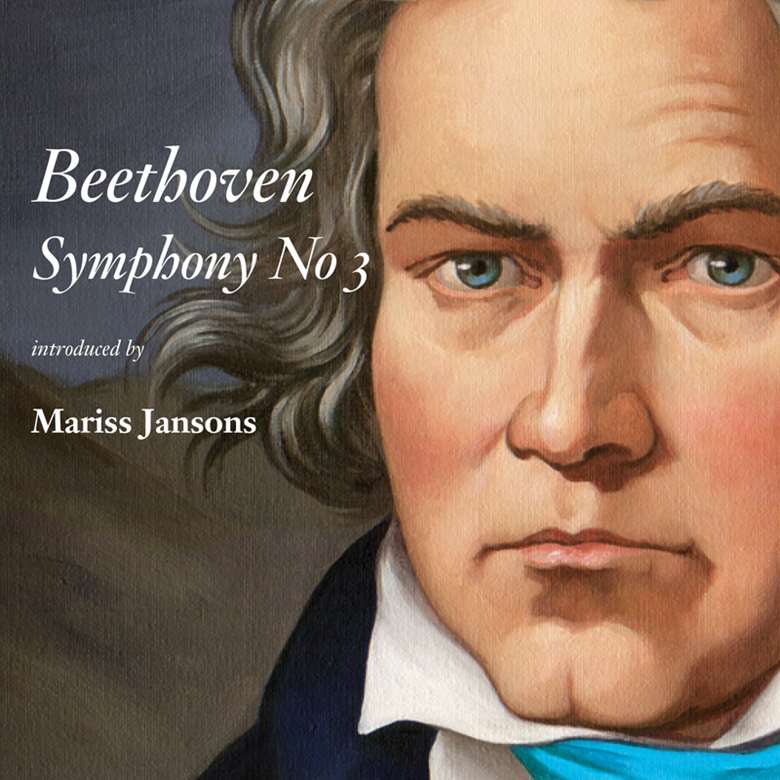Beethoven's Symphony No 3, introduced by Mariss Jansons
Gramophone
Monday, September 29, 2014
Continuing our series of great conductors introducing Beethoven's symphonies is Mariss Jansons on Symphony No 3, 'Eroica'

Of course it is difficult to say which Beethoven symphony is my most beloved – all these symphonies are wonderful. But if you really press me to choose one, it would be the Third Symphony that sits even deeper than the others in my world. It must have been part of my conducting life for at least 40 years. I didn’t want to mark my interpretation in some special or historic way when I recorded the piece in Tokyo in 2012, but all the same it was a time when I was very much connected to Beethoven.
I believe the Third Symphony represented a big step forward for Classical music, because in the First and Second Symphonies, yes, you feel it’s Beethoven, but it’s very connected to Mozart, to Haydn. Although you can already hear what I would call the special Beethoven spirit in the Second Symphony, it was the Third Symphony that brought a revolutionary change. It marked a complete change of direction for the symphonic repertoire. I refer both to the harmonic structure and to the design of the symphony. This was a revolution in every conceivable way. You could argue that a similar scherzo had already been written in the Second Symphony, but it was in this piece that Beethoven had a very monumental idea.
The second movement contains incredibly profound music, and the variations in the last movement represent a big step forward. The second movement is a funeral march, but above all it’s a march. In this march, it is essential to recognise that each beat is a crotchet, not a quaver, because if you treat each quaver as an individual step, as one beat, then you will end up taking the music incredibly slowly. You must also be careful to avoid making the music sound agitated, so you must take the music in two.
Perhaps this symphony is a little bit ‘Romantic’, say, in the third movement, because the horns give a kind of representation of nature, but I would not say it is the first Romantic symphony as such. For me it is Classical, but with a very, very big idea at its heart and enormous musical language. For example, in his finale, when Beethoven expresses the big culmination of the second theme using just three horns, double winds and strings, it feels as though he embraces the whole world, Mahler-style. It is unbelievable how this man could, with such limited means, achieve this spirit. It is the same orchestra that he’d used before, but with just one extra horn. What genius to introduce and fulfil big, profound and cosmic musical ideas with such limited resources. Sometimes composers use a mass of percussion and wind, but the content and atmosphere they produce are not as strong as this.
There are accidentals and chromatic notes scattered within the piece, but the first movement is clearly in E flat major and the second is in C minor, which is closely related. The third movement is again in E flat, so there is no very dramatic change in tonality. In this respect, the piece is very, very Classical. Even between his First and Second Symphonies, there is a great difference. The symphony that followed this one, No 4 in B flat, is perhaps not so dramatic a symphony, but in each work he said something new in musical terms.
Even by the time of his Second Symphony, Beethoven had written his Heiligenstadt Testament, in which he stated that he did not wish to live any more. I have read it many times and always there are tears in my eyes, yet at the same time he wrote such unbelievable music, full of light and optimism and even humour. He was a very highly developed spirit, a man above our world, with enormous spiritual energy. Of course, he wanted to dedicate the piece to a great man, so perhaps this greatness of feeling and ideas in the musical language was there because he wanted to express great, revolutionary ideas.
Although this is pure music, it does go beyond the traditional limits that were very common in Beethoven’s time. It goes much wider. It is a gigantic piece. It is one of the greatest symphonies any human being has created. The music expresses so much that there are not enough words to express what I feel when I conduct this symphony. It is so great and so profound.
We can assume and imagine, but we can never know for sure, how this symphony was performed in the composer’s time, because the contemporary accounts and markings from those who were with Beethoven are very difficult to judge. As far as the metronome markings are concerned, some continue to say that they are right and others say that they’re not. We know from the letters to Czerny that when Beethoven himself conducted, it was not easy to maintain ensemble because he introduced very many rubatos. So too many conflicting instructions and pieces of evidence make it hard to come up with any definitive guide to performance. All I can say is that we try to follow what is written in the score, but I don’t like dogmatic decisions based on assumptions about the past. In performance, even though this music goes through my inner world, it’s not a question of what I want. Together, we just want to express the wishes and the music of the composer. Where is the truth?
Interview by Michael McManus











